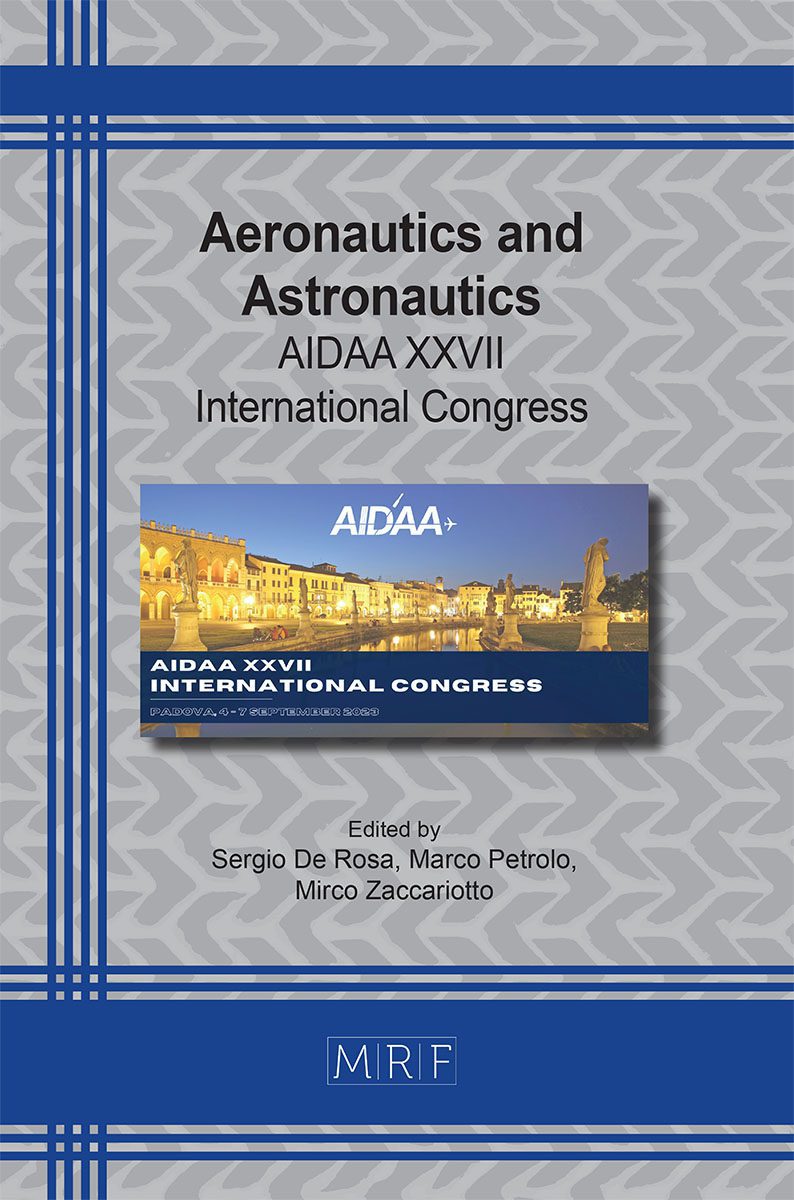The new transmitting antenna for BIRALES
G. Bianchi, S. Mariotti, M.F. Montaruli, P. Di Lizia, M. Massari, M.A. De Luca, R. Demuru, G. Sangaletti, L. Mesiano, I. Boreanaz
download PDFAbstract. In the last decades the increasing Resident Space Objects (RSOs) population is fostering many Space Surveillance and Tracking (SST) initiatives, which are currently based on the use of ground sensors. These can be distinguished in optical, laser and radar and categorized in tracking and survey sensors. In particular, the survey radars allow to determine the orbit of both catalogued and uncatalogued objects. Italy contributes to the European SST (EUSST) activities with the BIstatic RAdar for LEo Survey (BIRALES), whose transmitter is the Radio Frequency Transmitter (TRF), located at the Italian Joint Test Range of Salto di Quirra in Sardinia, and whose receiver is a portion of the Northern Cross Radio Telescope, located at the Medicina Radio Astronomical Station, near Bologna. The current sensor configuration is undergoing an upgrade process, including the receiver field of view extension and a new transmitter station. The purpose of the work is to present the new transmitting antenna of BIRALES, showing its technological progress and the potential for the monitoring of space debris. The final objective is to produce a high technological radar to improve the performance of the EUSST sensors network. In particular, the aim is to increase both the number of detectable objects and the sensitivity to detect fragments of a few centimetres up to an altitude of 2,000 km, with a remarkable improvement of orbit determination procedures and quality. The transmitting antenna has been designed to be very flexible for any type of observations, modifying its parameters depending on the observation needs and according to the service to offer (monitoring of fragments, re-entry or for collision avoidance). The work presents the system architecture and the transmitting antenna structure, and the performance are assessed through numerical simulations.
Keywords
Space Debris, EUSST, Radar, Emitter
Published online 11/1/2023, 4 pages
Copyright © 2023 by the author(s)
Published under license by Materials Research Forum LLC., Millersville PA, USA
Citation: G. Bianchi, S. Mariotti, M.F. Montaruli, P. Di Lizia, M. Massari, M.A. De Luca, R. Demuru, G. Sangaletti, L. Mesiano, I. Boreanaz, The new transmitting antenna for BIRALES, Materials Research Proceedings, Vol. 37, pp 474-477, 2023
DOI: https://doi.org/10.21741/9781644902813-104
The article was published as article 104 of the book Aeronautics and Astronautics
![]() Content from this work may be used under the terms of the Creative Commons Attribution 3.0 license. Any further distribution of this work must maintain attribution to the author(s) and the title of the work, journal citation and DOI.
Content from this work may be used under the terms of the Creative Commons Attribution 3.0 license. Any further distribution of this work must maintain attribution to the author(s) and the title of the work, journal citation and DOI.
References
[1] A. De Vittori et al., ” Low-Thrust Collision Avoidance Maneuver Optimization”, Journal of Guidance, Control, and Dynamics, 45(10), 1815-1829, 2022. https://doi.org/10.2514/1.G006630
[2] A. Muciaccia, et al., “Observation and Analysis of Cosmos 1408 Fragmentation.” INTERNATIONAL ASTRONAUTICAL CONGRESS: IAC PROCEEDINGS. 2022.
[3] R. Cipollone, et al., “A Re-Entry Analysis Software Module for Space Surveillance and Tracking Operations.” INTERNATIONAL ASTRONAUTICAL CONGRESS: IAC PROCEEDINGS. 2022.
[4] M.F. Montaruli, et al., “A software suite for orbit determination in Space Surveillance and Tracking applications.” 9th European Conference for Aerospace Sciences (EUCASS 2022). 2022.
[5] G. Bianchi et al., “A new concept of bi-static radar for space debris detection and monitoring”, 1st International Conference on Electrical, Computer, Communications and Mechatronics Engineering (ICECCME), 2021, pp. 1-6. https://doi.org/10.1109/ICECCME52200.2021.9590991
[6] G. Bianchi, et al. “Exploration of an innovative ranging method for bistatic radar, applied in LEO Space Debris surveying and tracking.” Proceedings of the International Astronautical Congress, IAC. 2020.
[7] M.F. Montaruli, L. Facchini, P. Di Lizia, M. Massari, G. Pupillo, G. Bianchi, G. Naldi, “Adaptive track estimation on a radar array system for space surveillance”, Acta Astronautica, 2022, ISSN 0094-5765. https://doi.org/10.1016/j.actaastro.2022.05.051
[8] G. Bianchi et al., “A New Concept of Transmitting Antenna on Bi-Static Radar for Space Debris Monitoring”, 2nd nternational Conference on Electrical, Computer, Communications and Mechatronics Engineering (ICECCME), 2022. https://doi.org/10.1109/ICECCME55909.2022.9988566































